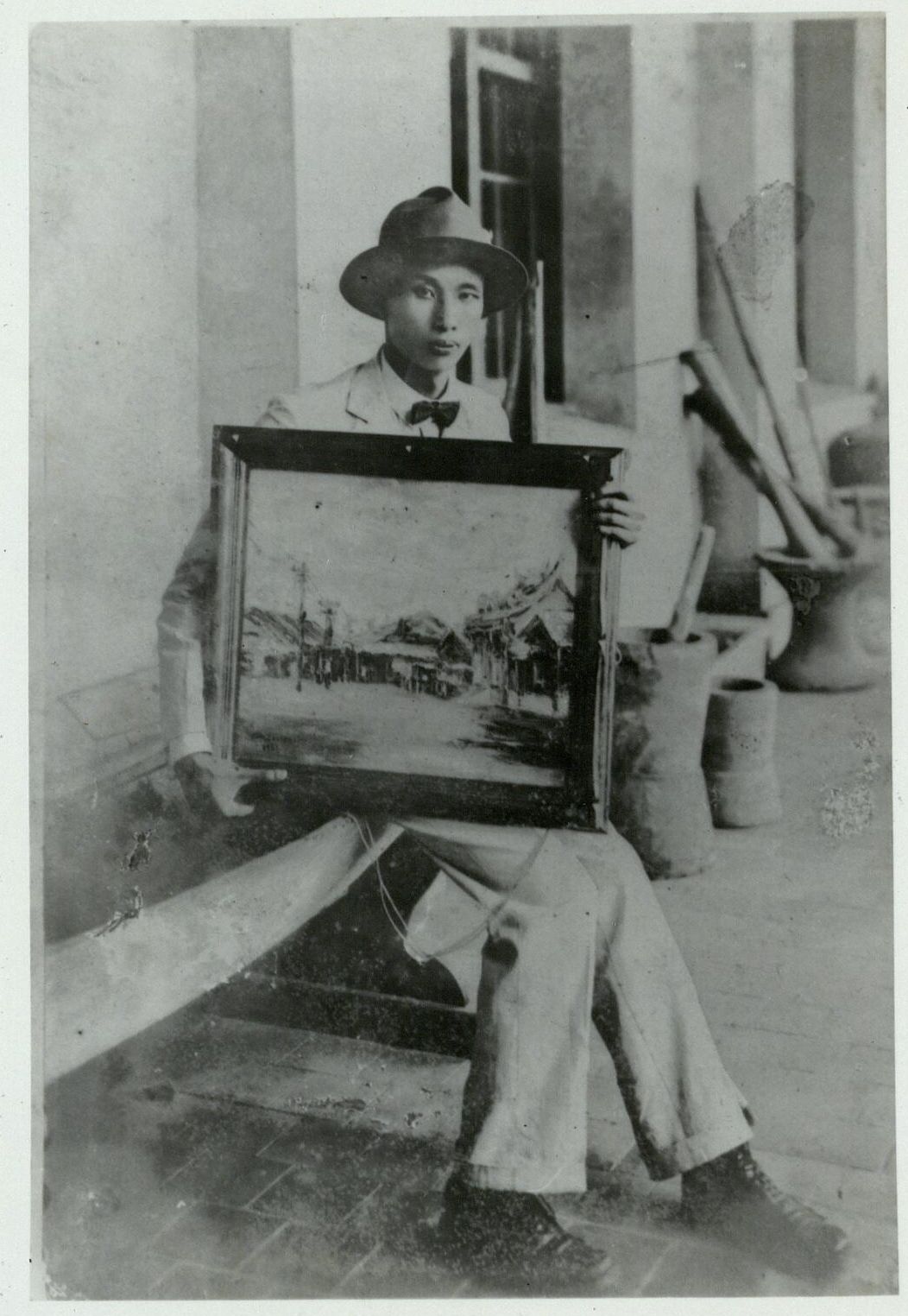|
Chen Zhi-qi was born in Xizhi, Taipei in 1906. His talent became apparent during childhood. He graduated top of his class at Nangang Public Elementary School and entered Taihoku Normal School. In 1924, he dropped out of school because he was involved in student movements. The next year, with the assistance of Kinichiro Ishikawa and Chiang Wei-shui, he went to Japan’s Tokyo Art School to study western painting, beginning his art career. Chen Zhi-qi was a resolute, enthusiastic, and ambitious man. He constantly tried different styles of painting. His vivid and bold brushwork conveys his striking characteristics and enormous vitality, reflecting his detailed observation of Taiwanese culture and local customs. Since the Taiwan Fine Arts Exhibition was first held in 1927, his paintings were selected every year. Furthermore, his Taiwan Scenery (1928) and Tamsui Scenery (1930) were selected for the Exhibition of the Imperial Fine Arts Academy. He was regarded as a young painter of genius at that time (see Figure 8).  Figure 8: Photograph of Chen Zhi-qi holding his oil painting, which was selected for an exhibition.
Source: Identifier: T1076_04_0001, Chen Zhi-qi Painting and Papers, Taiwan Archival Information System Chen Zhi-qi’s goal for his landscape paintings was to mold images of Taiwan’s southern characteristics. His Tamsui Scenery series of three paintings especially attracted peoples’ attention. From 1925 to 1930, Chen Zhi-qi stood on his brother-in-law’s housetop, overlooking Tamsui, painting the same image with different colors and styles. His painting depicts concentrated houses along the riverbank and Guanyin Mountain, located on the other side of the Tamsui River (see Figure 9-11). In 1930, Tamsui Scenery, which portrayed tightly spaced traditional southern Hokkien architecture, was selected for the 11th Exhibition of the Imperial Fine Arts Academy. In the mid-1920s, Chen Zhi-qi‘s paintings created diverse points of view to interpret landscapes in Tamsui. Standing on a higher position, taking a distant view of Guanyin Mountain and Tamsui River, using streets and houses on the hills as the foreground and the magnificent landscape as the background all became a preferred aspect for subsequent painters.  Figure 9: Tamsui Scenery I, painted by Chen Zhi-qi in 1925-1930.
Source: Identifier: T1076_02_01_0032, Chen Zhi-qi Painting and Papers, Taiwan Archival Information System  Figure 10: Tamsui Scenery II, painted by Chen Zhi-qi in 1925-1930.
Source: Identifier: T1076_02_01_0033, Chen Zhi-qi Painting and Papers, Taiwan Archival Information System  Figure 11: Tamsui Scenery III, painted by Chen Zhi-qi in 1925-1930.
Source: Identifier: T1076_02_01_0034, Chen Zhi-qi Painting and Papers, Taiwan Archival Information System  Figure 12: Tamsui Scenery, painted by Chen Zhi-qi in 1930, was selected for the 11th Exhibition of the Imperial Fine Arts Academy.
Source: Identifier: T1076_02_01_0018, Chen Zhi-qi Painting and Papers, Taiwan Archival Information System In order to promote art in Taiwan, Chen Zhi-qi established local art clubs such as the Qixing Painting Forum, Chidao Club, and Taiwan Painting Institute, showing his leadership quality as a guide to young painters. Unfortunately, while on a trip to Japan to attend the exhibition in 1930, Chen Zhi-qi contracted pleurisy and died at the age of 26. His death was a great loss to art communities in Taiwan. His mentor, Kinichiro Ishikawa, wrote an article to mourn his talented student. Yoshimura Yoshimatsu, who had guided Chen Zhi-qi’s painting, also sighed: “It is lamentable that I cannot see the Tamsui landscapes sketched by Mr. Chen anymore.” |
 |



